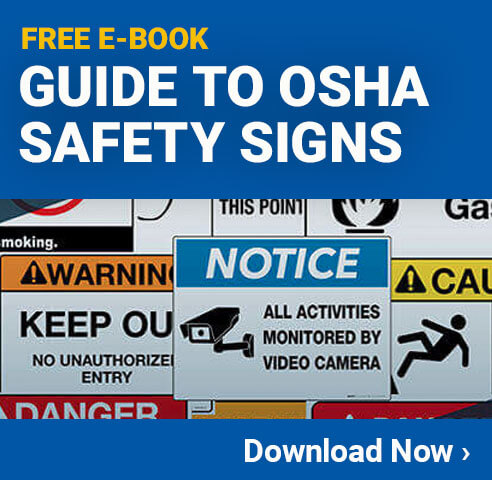
Text From Infographic
How to stay on top of ladder safety
Each day ladder-related accidents cause:
- 2000 Injuries
- 1 Fatality
In the workplace, 20% of fall injuries involve ladders. In construction 81% of fall injuries involve ladders (based on data from fall injuries treated in emergency rooms).
Take these steps for ladder safety
First, determine if a ladder is the best option for the job.
Ask yourself these questions:
- Will I have to hold heavy items while on the ladder?
- Do I have to stand on the ladder sideways in order to do this work?
- Will I be working from this height for a long time?
- Is the elevated area high enough that it would require a long ladder that could be unstable?
OSHA suggests that if you answer “YES” to any of these questions, a ladder might not be a good idea.
Choose the right ladder
Which type?
- Step ladders (self supporting ladders)
- Extension ladders (non-self supporting ladders)
Ladder height - Choose a ladder that is the correct height for the job.
- Extension ladders should extend 3 feet beyond the edge that supports them and be placed at a safe angle.
- OSHA says a safe angle is when “the horizontal distance from the top support to the foot of the ladder is about ¼ the working length of the ladder.”
- Never stand on the top rung or step
Ladder material - Consider the material from which your ladder is made. Aluminum is conductive and not to be used around electricity.
- Fiberglass (for working around electricity)
- Aluminum (lightweight, NOT for use around electricity)
Safety features - ProTip: If unsure about the safety level of the ladder, take time to locate a knowledgeable store clerk and ask!
- Are safety treads present to avoid slipping?
- Is the ladder certified?
- Are lock bars present?
- Are the steps safely connected to the frame?
- Does the ladder have safety feet that anchor the ladder?
Follow these ladder safety guidelines
- Inspect the ladder for damage or stability issues.
- For self-supporting ladders, lock the metal spreader for security. If your ladder does not have them, consider another one.
- Place the ladder on stable ground.
- Always have 3 points of contact with the ladder (two hands and one foot or two feet and one hand).
- Face the ladder when ascending or descending.
- Don’t carry tools in your hands. Use a tool belt!
- Use a spotter for extra safety.
- Wear proper footwear with treads
- Don’t lean outside the ladder’s rails.
Creative Safety Supply is committed to being your safety and labeling experts. We provide a wide range of industrial safety products to increase visual awareness, safety and Lean practices. Call today!
Similar Infographics
- The 12 Days of Christmas Safety
- The A,B,Cs and 1,2,3s of Fall Protection
- Stop Buying Labels from a Catalog
- 5 Steps for Pipe Label Compliance
- Arc Flash PPE Categories
- Surprise OSHA Inspection? What to Expect
- Top 10 OSHA Violations in 2018
- Pipe Marking 101: Why is Pipe Marking Important?
- Forklift Accidents: Causes and Prevention

